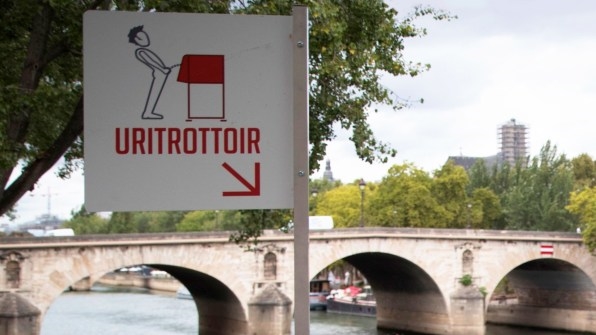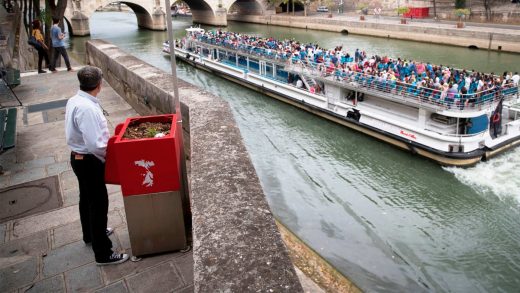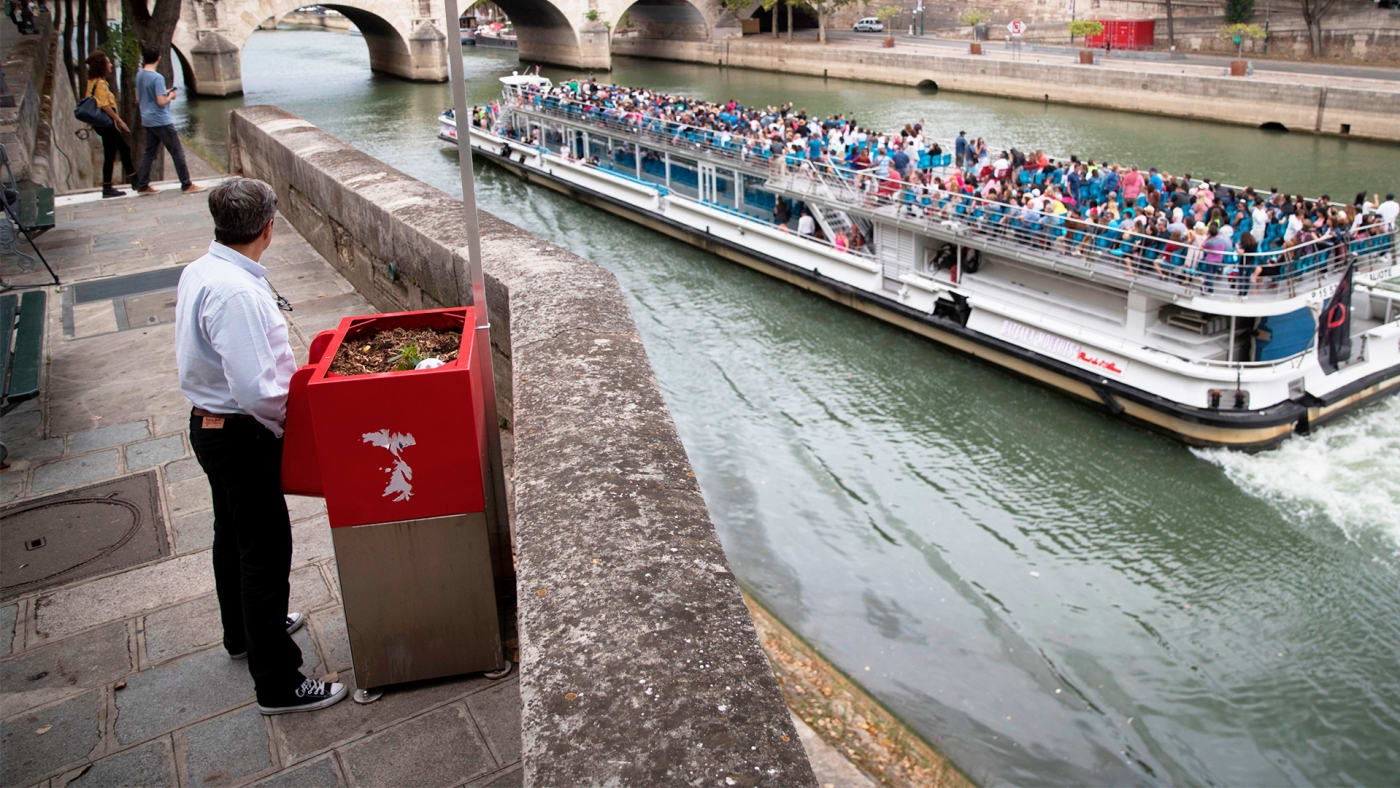Paris redesigned the urinal, but the real problem is the urinators
Paris, like every other metropolis in the world, has a problem: Everything smells like pee, thanks to men who relieve themselves on the streets. Officials in the French capital are now experimenting with a solution that involves allowing men to urinate in public–into a urinal called the Uritrottoir. But is changing the look and feel of a city the right way to deal with a public nuisance?
The open-air urinal–its name is a French portmanteau of urine and trottoir, or sidewalk–is a metal box full of straw, which is supposed to absorb the smell and could be composted to fertilize city trees. The boxes have a large wedge that allows men to get close and pee inside a hole, over the straw. On top of the box sits a small bed for flowers, an idyllic crown that seems unlikely to distract anyone from what’s going on below. They come in many different sizes and shapes ranging from the “parfait,” which can be used 90 times before the straw needs to be changed, to the “stout,” which can handle 270 times. So far the city has only installed four so far but seems intent on adding more.

It’s a solution meant to get rid of the strong smell of urine in heavily trafficked areas, and the city points out that it’s an ecological solution since it requires no water and can be composted. The Uritrottoir’s creators, meanwhile, call it “the urban ecological solution for civilizing wild peeing.” While it may be marginally better than peeing on a wall or curb, it’s hardly a consolation for the people who have to endure seeing grown men urinate in public, and I wouldn’t call it “civilized.” French locals seem to agree. Containing yourself until you get home–or simply finding a bar, coffee shop, or public restroom? That would be civilized.
Gwendoline Coipeault, who works with the feminist group Femmes Solidaires, made a great point during an interview with Agence France-Press: “[The Uritrottori has] been installed on a sexist proposition: men cannot control themselves (from the bladder point of view) and so all of society has to adapt . . . The public space must be transformed to cause them minimum discomfort.”
Why do we have to change our public spaces to accommodate ill-mannered men? Urban planning and street design are the wrong answer here. This is a matter of education–of being respectful to the people and places around you. And, perhaps, stronger penalties for anyone who doesn’t.
(117)



